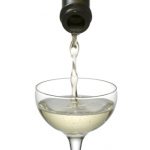
Name
Asti AOCG
Seal of quality
Guarantee of Origin and Protected Designation of Origin.
A.O.C. – D.P.R. 9th July 1967
A.O.C.G. – D.P.R. 29th November 1993
Description
A straw-yellow wine characterised by a strong aromatic component that reproduces the fragrance of the ripe bunches of muscatel, combined with a low-alcohol content and harmonious sweetness. It is the result of the vinification of pure white muscatel and comes in two types: “Asti Spumante” and “Moscato d’Asti”. The first is a sparkling wine characterised by a delicate and lasting perlage, with a alcoholic content ranging from 7% vol to 9.5% vol, whereas the second is still or at times vivace with a lower alcohol content, included within the limits of 4.5% vol- 6.5% vol, it is sweeter, due to partial fermentation of the sugar contained in the grapes. Virtue of the different internal bottle pressure, Asti Spumante and Moscato d’Asti can be identified by their corks: the first has the classic mushroom-shaped cork, whereas the cork of the second is straight.
Area of production
The area of production, officially delimited since 1932, includes 52 Communes in the provinces of Alessandria , Asti and Cuneo . In the province of Cuneo the area of production corresponds to the areas of Camo, Castiglione Tinella, Cossano Belbo, Mango, Neive, Neviglie, Rocchetta Belbo, Serralunga d’Alba, Santo Stefano Belbo, Santa Vittoria d’Alba, Treiso, Trezzo Tinella, Castino, Perletto and the villages of Como and San Rocco Seno d’Elvio of Alba.
History
Muscatel grapes were undoubtedly the first to be grown because of their extremely strong bouquet and their sweetness. Of course it is not the muscatel we know today, time has changed that old vine into many different species that grow on the hills overlooking the Mediterranean Sea and each has a life of its own. One can immediately tell the difference between the zibibbo (a kind of muscatel grape) of Pantelleria and the white muscatel of Canelli, but fact remains that there is an important relationship.
The word muscatel comes from the Latin word “cuscus”, an essence that was once extracted from the gland of a small animal and which was widely used in perfumeries, and it simply means scented, spiced.
Muscatel vine-growing in the Langhe and Monferrato presumably began in 1200, whilst the first written documentation on the “moscatello” wine trading dates back to 1593. The “Consorzio per la Tutela dell’Asti” was officially founded on December 17 th 1932 and recognised in 1934. Its initial activity was to verify under the sole denomination of ” Asti ” the protected wine, to outline the area of origin, the vine, the preparation techniques, final type. Its initial name was: “Consorzio per la Difesa dei Vini Tipici Moscato d’Asti Spumante e Asti Spumante”. The fact of concentrating the market’s attention on the one word ” Asti ” had a fundamental impact to the extent that it led to the unification of the types and, therefore, the possibility for the production to supply a sufficient quantity of wine able to satisfy trading requirements and to carry out an efficient promotional campaign. The area of production, identified in 1931, is practically the same as today’s, delimited by the “Disciplinare di Produzione dell’Asti Aocg” (Disciplinary Regulations) and this goes to show the effectiveness of the activities carried out and the farsightedness of the people who have been concerned with “Asti” for all these years.
The Consortium’s mark (the patron saint of Asti , San Secondo, on horseback) was the first illustration of typicality and guarantee, which, at the end of the second world war, gave Piedmontese operators and consumers all over the world something they knew they could rely on, and with whom Italy is starting to trade again.
The production gradually grew from the two million bottles sold immediately after the war, to 70 million in the 70s. A figure that today has almost doubled. This huge difference has been made possible thanks to the enlargement of the vineyards in the areas of origin, to the disadvantage of other grape varieties in lower demand and less noble, and to the significant contribution of the Consortium that controlled (and controls) over 90% of the production. This contribution became of vital importance with the issue of the decree of the President of the Republic No. 930 of the July 12 th 1963, with which the Designation of Origin status of the musts and wines was established in Italy, The Consorzio di Asti, which already meritoriously operated in previous years during which there were no legislative regulations regarding protection and control, took action to obtain Disciplinary Production Regulations for Asti Spumante, Moscato d’Asti Spumante and Moscato d’Asti, all AOCwines. In those years, the consortium diversified its interventions, dealing with the distribution of the product, subject now not only to quantity control, but also to quality control, the most important basis for the marketing of Asti wines. Granting of the Consortium mark to be attached to the bottle was, in fact, the consequence of actual confirmation of qualitative suitability of spumante Asti , contained in that precise bottle.


